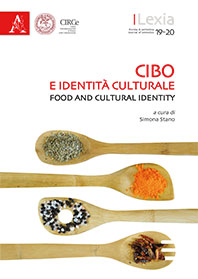Estratto da
LEXIA. RIVISTA DI SEMIOTICA
Cibo e identità culturale | Food and Cultural Identity
Sémiotique et transculturalité : vers un espéranto du discours marchand ?
LEXIA. RIVISTA DI SEMIOTICA
Cibo e identità culturale | Food and Cultural Identity
Sémiotique et transculturalité : vers un espéranto du discours marchand ?

ENGLISH TITLE: Semiotics at work: Towards a cross-cultural advertising grammar?
ABSTRACT: This paper deals with a case study in which Greimasian semiotics was applied to transcultural texts and contexts. In the case in point, the analysis was conducted amongst creative projects designed to produce an international advertising TV campaign for a blue chip brand of dry food products. There were two campaigns, each of which was written in a specific vein, competing against one another. These creative projects were sieved through the safety net of a grid that was the result of a pre–analysis done amongst a large set of finished adverts promoting neighbouring food product categories and coming from three different countries (France, Germany and the United Kingdom), each of which had distinct food habits and culinary practices. On the basis of this corpus of finished films, and using the generative trajectory of meaning as the theoretical backbone of the research, the first step of the analysis aimed at identifying the various roles and values attributed to their products by the selected brands in each country, as well as the different ways in which they articulated the rhetorical mechanics and enunciative structures that they harnessed in order to “seduce” their receivers and enunciatees. This first phase allowed to elicit the communicational logics in play on the food advertising scene, both culturally and transculturally driven, that were then used in the second phase of the research as the magnifying glass allowing to peruse the creative projects with a view to determining and foretelling which of those were most relevant and likely to be most efficient across countries. The semiotic analysis having determined the best contender, and an international quantitative research having confirmed those findings, thework allowed the brand to shoot the campaign that had been spotted as themost capable of subsuming the advertising and product expectations across geographies and to air it in the three markets involved.
KEYWORDS: conversion; enunciation; forms of life; transculturalness; value–creation.
ABSTRACT: This paper deals with a case study in which Greimasian semiotics was applied to transcultural texts and contexts. In the case in point, the analysis was conducted amongst creative projects designed to produce an international advertising TV campaign for a blue chip brand of dry food products. There were two campaigns, each of which was written in a specific vein, competing against one another. These creative projects were sieved through the safety net of a grid that was the result of a pre–analysis done amongst a large set of finished adverts promoting neighbouring food product categories and coming from three different countries (France, Germany and the United Kingdom), each of which had distinct food habits and culinary practices. On the basis of this corpus of finished films, and using the generative trajectory of meaning as the theoretical backbone of the research, the first step of the analysis aimed at identifying the various roles and values attributed to their products by the selected brands in each country, as well as the different ways in which they articulated the rhetorical mechanics and enunciative structures that they harnessed in order to “seduce” their receivers and enunciatees. This first phase allowed to elicit the communicational logics in play on the food advertising scene, both culturally and transculturally driven, that were then used in the second phase of the research as the magnifying glass allowing to peruse the creative projects with a view to determining and foretelling which of those were most relevant and likely to be most efficient across countries. The semiotic analysis having determined the best contender, and an international quantitative research having confirmed those findings, thework allowed the brand to shoot the campaign that had been spotted as themost capable of subsuming the advertising and product expectations across geographies and to air it in the three markets involved.
KEYWORDS: conversion; enunciation; forms of life; transculturalness; value–creation.
| pagine: | 347-366 |
| DOI: | 10.4399/978885488571422 |
| data pubblicazione: | Giugno 2015 |
| editore: | Aracne |








